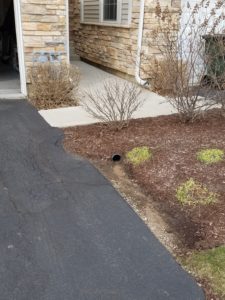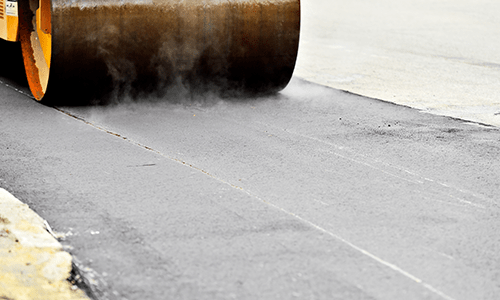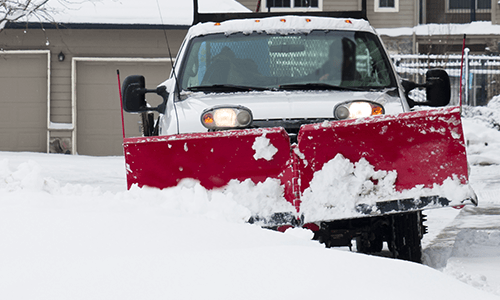In the asphalt paving business we are asked many questions regarding proper maintenance of pavement surfaces for driveways, parking lots and roads. Our best advice is to be proactive about maintenance to ensure the life of your pavement surface.
As we change seasons from winter to spring, one of the most frequent issues we encounter is heaving of asphalt driveways. This occurs mostly at the top of driveways, at the garage, where the concrete apron meets the asphalt driveway. Water penetrates the stone base and subgrade, freezes and raises –or heaves- the asphalt surface. So how do we stop this from occurring? The most logical place to start is not the driveway itself but to eliminate the source of problem, water. Moisture and poor pavement drainage are significant factors in pavement deterioration.
Typically at the side or front of the driveway are the downspout run off areas. The downspout structures carry an enormous volume of water from the roofs of your homes, often in quantities larger than the driveway surface itself. And due to the climate and weather patterns of our area in recent years, we tend to experience heavy wet winter and spring seasons that bring large amounts of water to be displaced.

The problem occurs when water accumulates in the stone base and subgrade, under the asphalt pavement. Once water enters the subgrade, it is usually slow to evaporate or drain. In the winter it freezes and even in dry weather, the subgrade may remain wet or damp indefinitely. Repositioning and burying downspouts under concrete sidewalks, to direct water flow away from the stone base is vital to pavement structures. When downspouts cannot be buried, water should be directed to run on top of the driveway surface versus under the driveway or into the stone base and subgrade. The pavements should be able to quickly shed water off the surface to areas that drain away from the stone base.
Proper installation of downspout extensions is important. You don’t want to simply bury it under the sidewalk to keep it away from the top of the driveway. The picture below illustrates a downspout extension that was buried; however, it simply redirected the water problem further down the driveway.
Proper placement of the extension away from stone base, further into plant beds/lawn areas is needed.
When inspecting driveways it is vital to look at drainage at the same time as you evaluate the asphalt surface condition. The question to ask is, “what is the cause of the pavement failure?” Adequate drainage of the pavement structure is considered one of the most important factors in driveway performance. Simply put, improper or no drainage can lead to failed pavement. Partnership with an Asphalt/construction professional is the key to your success.




 Simon Fox
Simon Fox 
 CAI - Illinois Chapter
CAI - Illinois Chapter 


